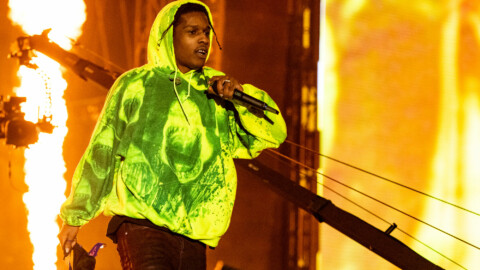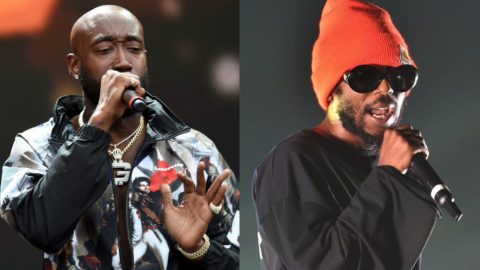
It’s been almost a week since I beat The Last Of Us Part II, and I can’t get the specific image of one character’s face out of my head. Their expression haunts me. Even when I’m watching silly YouTube videos, making lunch or trying to get to sleep, I’ve found that my mind will inevitably wander towards it. I’ve tried to replace it by starting the game over or flitting through old screenshots, but nothing has worked. It’s stuck there, seemingly forever, a reminder of the consequences of my actions – whether I wanted to take them or not – in one of the most challenging video games I’ve ever played.
The Last Of Us Part II is a game about violence, and across 30 hours of difficult emotions, I went to war with my own preconceived notions of the characters that I had come to know in the first game – and formed unbreakable bonds with the sequel’s new blood.
I lurched and shouted in distress at the TV, felt my head sway with nausea, grinned from ear to ear and subsequently cried my eyes out. At one point, half-recoiling from the screen due to the harrowing scene in front of me, I put the controller down and let the protagonist die because I was at odds with what the game was asking me to do.
I didn’t want to play anymore if this was what it meant to continue. In the game over screen, I was begging for the game to give me an out. I wanted to find another way so that it didn’t have to be like this, but as with many of the ethically muddy situations that blindside you throughout The Last Of Us Part II, it was meant to be, and all I could do was stew in the malaise that followed.
For the die-hard fans of The Last Of Us – a game I personally wasn’t so enamoured with – many questioned whether a sequel was the right move, suggesting that the relatable tragedy of Joel and Ellie’s tale should be left in its critically acclaimed situ, never to be excavated. After finishing The Last Of Us Part II, I could not disagree more. This game justifies its existence very quickly, and serves as an essential coda to that story, unravelling its most ambiguous and heartbreaking threads, pushing its characters to the bitter end of their arcs. I much prefer it, but I’m not sure that Part II could exist or achieve what it has without the spectre of the original looming over it.
An extremely human level of depth is coaxed out by Naughty Dog through meticulous animations, playful smirks and perfectly awkward dialogue. Its script is full of the tricky conversations that we’ve all had in our past – the heart-racing playful banter in the early throes of a relationship and the forgotten arguments that sting when pulled to the front of our mind’s eye. You can tell that Naughty Dog has let the motion capture actors breathe and move around in a massive soundstage, giving them the room to emote, riff and feel these lines – there are scenes without words that say so much more.
It goes without saying that it looks good – as far as photorealism is concerned, The Last Of Us Part II is the best-looking game of the generation, with its nose crinkles, worn fretboards and overgrown post-apocalyptic suburbs. I could write 2,000 words about the muscular arms of one of the game’s new characters, the individual raindrops that stream down Ellie’s face or the way horses crunch through shallow ice in a frostbitten stream, but you know all of this already if you’ve seen the trailers. The detailing is beyond absurd, and that extends to the game’s main focus – its violence.
There will be plenty of thesaurus–diving to convey the detail behind The Last Of Us Part II’s violence, but none of it will be able to depict just how traumatic the experience is when you go hands-on. Combat feels purposefully desperate – like you’re seconds from death at any given moment.

Ellie is an absolute warrior, but she’s also just as vulnerable as any other human born into such an unforgiving situation. The way people fight in this post-apocalypse reflects the speed in which they were forced to adapt to it – they won’t think about punching your head into a garage door or sticking a finger in your eye socket to get out of a grapple. If you run at them like blockhead bullet sponge Nathan Drake, they will bury you in lead quicker than you can say ragdoll.
These survivors are hungry, angry and afraid – and the only way they can wrest control in this lawless dystopia is through physical dominance. This concept is realised well via the game’s main factions, the crypto-fascist Washington Liberation Front and the zealous Seraphites, a religious cult who have regressed into the technological past to thrive in a situation where mastery of land can be a greater tool than any high-calibre rifle. They whistle to communicate to each other in battle, stripping you of the chance to understand their intentions as an arrow pierces your abdomen and a claw hammer slams into your temple.
The combat is, by all means, exhilarating – the best system Naughty Dog has yet produced. Even the gimmicks like naming enemies land when the situation allows for it, as WLF Soldiers shriek the names of their friends and lovers in anguish after they see their torso severed from their waist by one of Ellie’s trip mines.

One of the game’s most significant improvements on the original is its refined approach to survival horror – with such desperate, grisly bloodsport at stake, every Clicker encounter will slick your palms and make you shiver in fear. You can taste the atmosphere when the game throws you into a spore den, and the sickly new monster designs create overwhelming situations where you’ll be forced into action to delay their intelligent pathing from outwitting Ellie and stealing her jugular.
It all sounds very gratuitous, and as I pressed through the game, I thought that it would be impossible for Naughty Dog to create such grisly viscera systems without realising the need to address such dissonance in the game’s plot, and I’m pleased to say that this is something it manages to pull off across the course of the story.
Without saying too much, The Last Of Us Part II uses these systems to its own benefit, with Westworld alum Halley Gross brought on board to weave an incredible narrative about the lengths people go to justify revenge under the duress of trauma, and how Sisyphean cycles of brutality slowly tear relationships apart.
Yet despite its nauseating violence, The Last Of Us Part II is bursting with heart, and many of its character arcs serve as empathy vehicles to help break down draconian societal sensibilities. Discussion of the game’s queer representation should be left to writers other than myself, but the thoughtful stories that underpin these new characters moved me greatly.

Music and its memory-making power are also of paramount importance to The Last Of Us Part II story, and its emotional atmosphere is complemented by some immaculate acoustic guitar fingering from series composer Gustavo Santaolalla.
As such, the recurring motif of a virtual acoustic guitar in Part II is a wounding aside, with every heart-rending pluck of the simulated strings feeling even more difficult than the last given the distance between each play session. I’d often lose hours sitting and strumming out chords to some of my favourite songs when the game gave me the chance to blow off some steam.
One genius turn is making it so that the game’s most significant surprises don’t arrive after hours of build-up – most often, they happen as they would in real life, at the moment, and rob the player of a pause to process the trauma. This really cranks the immersion to incredible heights, yet when the game does take its foot off the pedal, it’s just as effective. I recall feeling like a smitten third wheel (in the best way possible) as Dina and Ellie slowly flirted their way through a decaying downtown Seattle. Similarly, later in the story, all it took was one agonising note to a forgotten father found on a decaying corpse to summon an unexpected flurry of tears – in an otherwise light-hearted section of the game.
The Last Of Us Part II will be available on PlayStation 4 on June 19.
Our Verdict
The Last Of Us Part II is a purposefully challenging game that spans the entire emotional spectrum, one that will force you to reconsider your preconceived ideas about the beloved original. It’s a vicious thrill ride that is not for the faint of heart, but the gratuitous, guttural depths of its violence do not exist without a cause. The harrowing combat and thick atmosphere make for adrenaline-pumping gameplay. Still, the dissonance works to serve a higher moral told with heartbreaking humanity by a cast of sophisticated but charming characters who are all saddled with the consequences of unimaginable tragedy. It’s a humbling game that never feels like a slog across 30 hours of play – one that every PlayStation 4 owner should experience.
Pros
- Tremendous narrative that will have you at the edge of your seat
- Incredible, photo-realistic graphics; the best-looking game of the generation
- Combat is challenging, so you feel like you’re simply sailing to the end of the narrative
- Stellar cast acting that rounds of a spectacular video game
Cons
- None that we can point out
The post ‘The Last Of Us Part II’ review: a challenging, magnificent coda to one of gaming’s most beloved stories appeared first on NME Music News, Reviews, Videos, Galleries, Tickets and Blogs | NME.COM.






